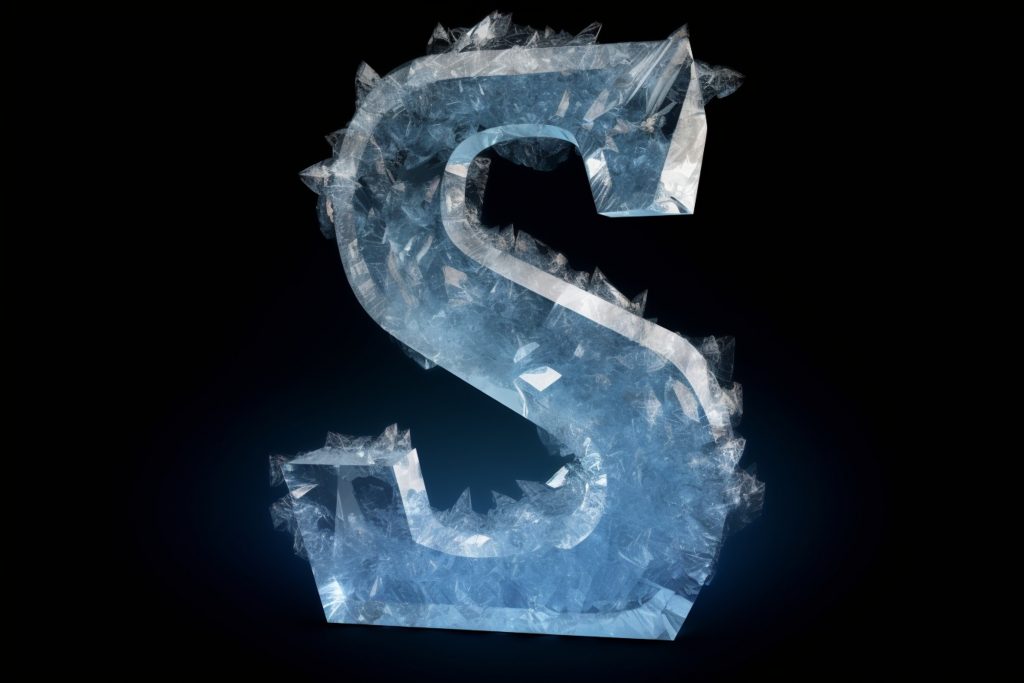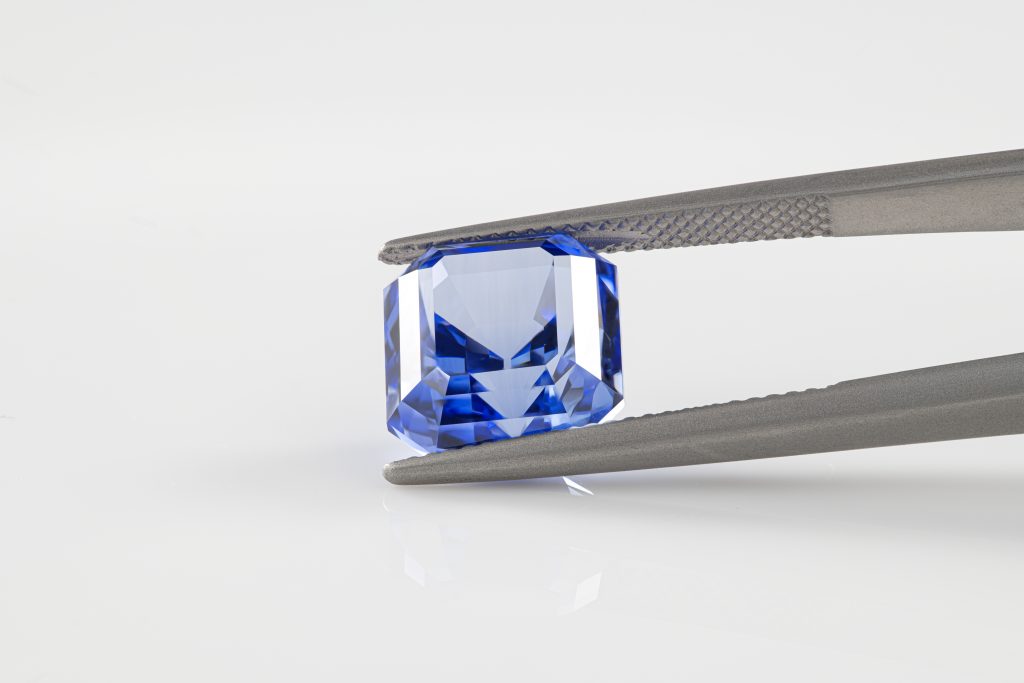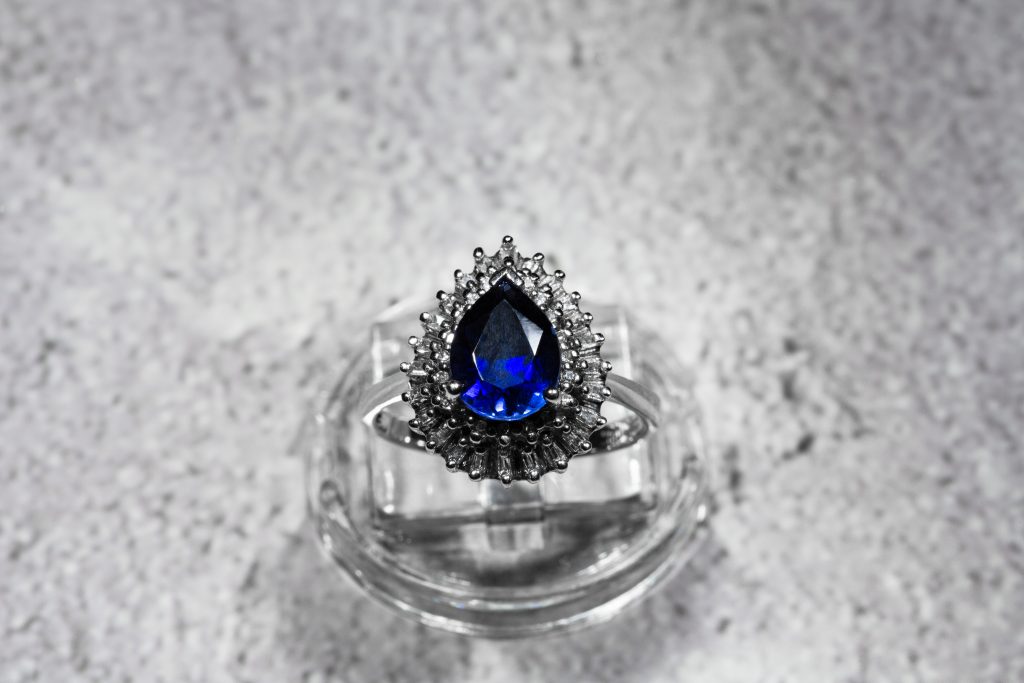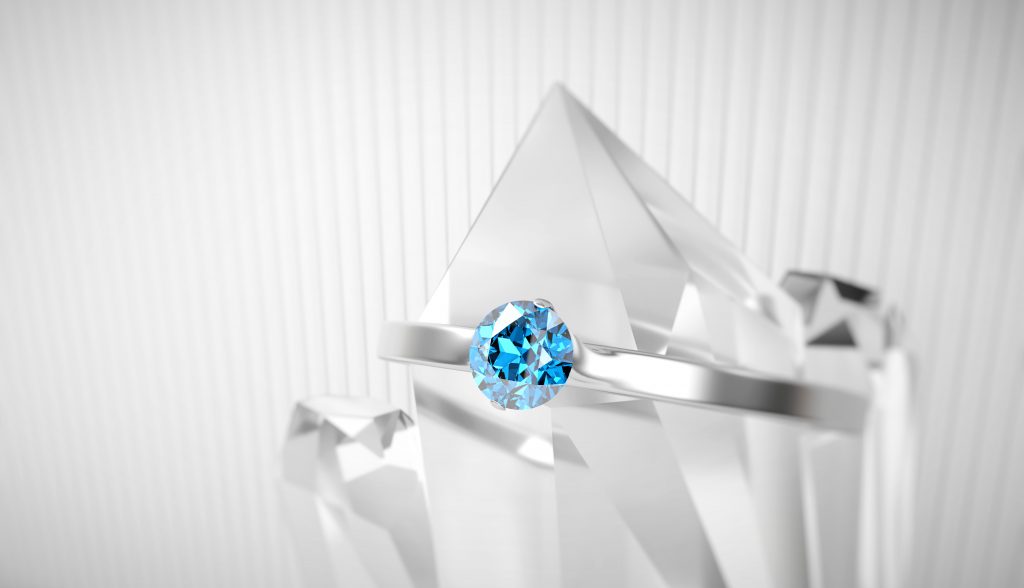
Sapphire
Sapphire is a precious gemstone, a variety of the mineral corundum, consisting of aluminium oxide(α-Al2O3) with trace amounts of elements such as iron, titanium, cobalt, lead, chromium, vanadium, magnesium, boron, and silicon. The name sapphire is derived via the Latin sapphirus from the Greek sappheiros (σάπφειρος), which referred to lapis lazuli. It is typically blue, but natural “fancy” sapphires also occur in yellow, purple, orange, and green colours; “parti sapphires” show two or more colours.
Natural sapphires
Sapphire is one of the two gem-varieties of corundum, the other being ruby (defined as corundum in a shade of red). Although blue is the best-known sapphire colour, they occur in other colours, including gray and black, and also can be colourless. A pinkish orange variety of sapphire is called padparadscha.

Treatments
Sapphires can be treated by several methods to enhance and improve their clarity and colour. It is common practice to heat natural sapphires to improve or enhance their appearance. This is done by heating the sapphires in furnaces to temperatures between 800 and 1,800 °C (1,470 and 3,270 °F) for several hours, or even weeks at a time. Different atmospheres may be used. Upon heating, the stone becomes bluer in colour, but loses some of the rutile inclusions (silk). When high temperatures (1400 °C+) are used, exsolved rutile silk is dissolved and it becomes clear under magnification. The titanium from the rutile enters solid solution and thus creates with iron the blue colour The inclusions in natural stones are easily seen with a jeweler’s loupe. Evidence of sapphire and other gemstones being subjected to heating goes back at least to Roman times. Un-heated natural stones are somewhat rare and will often be sold accompanied by a certificate from an independent gemological laboratory attesting to “no evidence of heat treatment”.

Colour
Besides for the varieties of Sapphire listed below, Sapphire with colour other than blue are prefixed with their colour names. The main gemstone colours in addition to blue Sapphire include:
– Yellow Sapphire (sometimes also called “Golden Sapphire” if intensely coloured)
– Pink Sapphire
– White Sapphire (describes Sapphire that is colourless)
– Green Sapphire
– Purple Sapphire
– Orange Sapphire
– Black Sapphire

Sapphire Quality Factors
COLOURS OF SAPPHIRE-Sapphire is generally known as a blue gemstone but surprisingly it comes in a wide range of colours and quality variations. In general, the more intense and uniform the colour is, the more valuable the stone.
SAPPHIRE CLARITY-Blue sapphires typically have some inclusions, but they generally have better clarity than rubies. Blue sapphires with extremely high clarity are rare, and very valuable.
SAPPHIRE CUT-The shape of a rough sapphire crystal influences the finished stone’s shape and size. Rough sapphire’s most common crystal form is a barrel- or spindle-shaped hexagonal pyramid.
SAPPHIRE CARAT WEIGHT-Blue sapphires can range in size anywhere from a few points to hundreds of carats, and large blue sapphires are more readily available than large rubies. However, most commercial-quality blue sapphires weigh less than 5.00 carats.

Most Expensive Sapphire Colour
The blue sapphire colour chart features various shades from pastel, cornflower, peacock, velvet, royal, indigo and twilight. Cornflower blue and royal blue sapphires are the most expensive of these hues.
- Cornflower Blue Sapphire has an irresistible beauty resembling the cornflower. Associating the gemstone colour with one of the rarest hues in nature makes this variety of sapphires exclusive. Ceylon (Sri Lanka) is famous for generating the best of these gemstones.
- The finest quality Royal Blue Sapphire stones are from Burma (Myanmar). These gemstones get their name from the darker shade of royal blue colour that it exhibits. Royal blue sapphire gemstones are considered the best quality sapphires owing to their appealing hue. These varieties of blue sapphires are known to activate the third eye chakra.
- Blue sapphires are common and highly desirable, but the Padparadscha Sapphire has their own significance. These amazing sapphire stones feature a rare pink-orange hue. This colour is reminiscent of the lotus flower and hence named so, “padma raga” in Sanskrit refers to ‘lotus colour.’ Padparadscha Sapphire stones have been originally found in Sri Lanka. The appealing unique colour of the stone has gained popularity, and after the Padparadscha Sapphire Engagement Ring was flaunted by Princess Eugenie in 2018, this rare gemstone is in trend.
- Colour Change Sapphires are rare sapphires exhibiting a unique colour change phenomenon. These gemstones showcase a colour shift when seen in fluorescent and incandescent lighting. The colour shift is from blue to purple, making this stone amongst unique and rare choice. These sapphire stones originated from Madagascar, Tanzania and Sri Lanka.
- Kashmir Sapphire: These beautiful sapphires feature a velvet blue hue. The silk-like rutile needles are exclusive qualities shown by Kashmir Sapphire. The light travels through these needle-like inclusions giving a velvety shine. Kashmir sapphire prices are generally higher due to the intense velvety blue colour of the stone.
